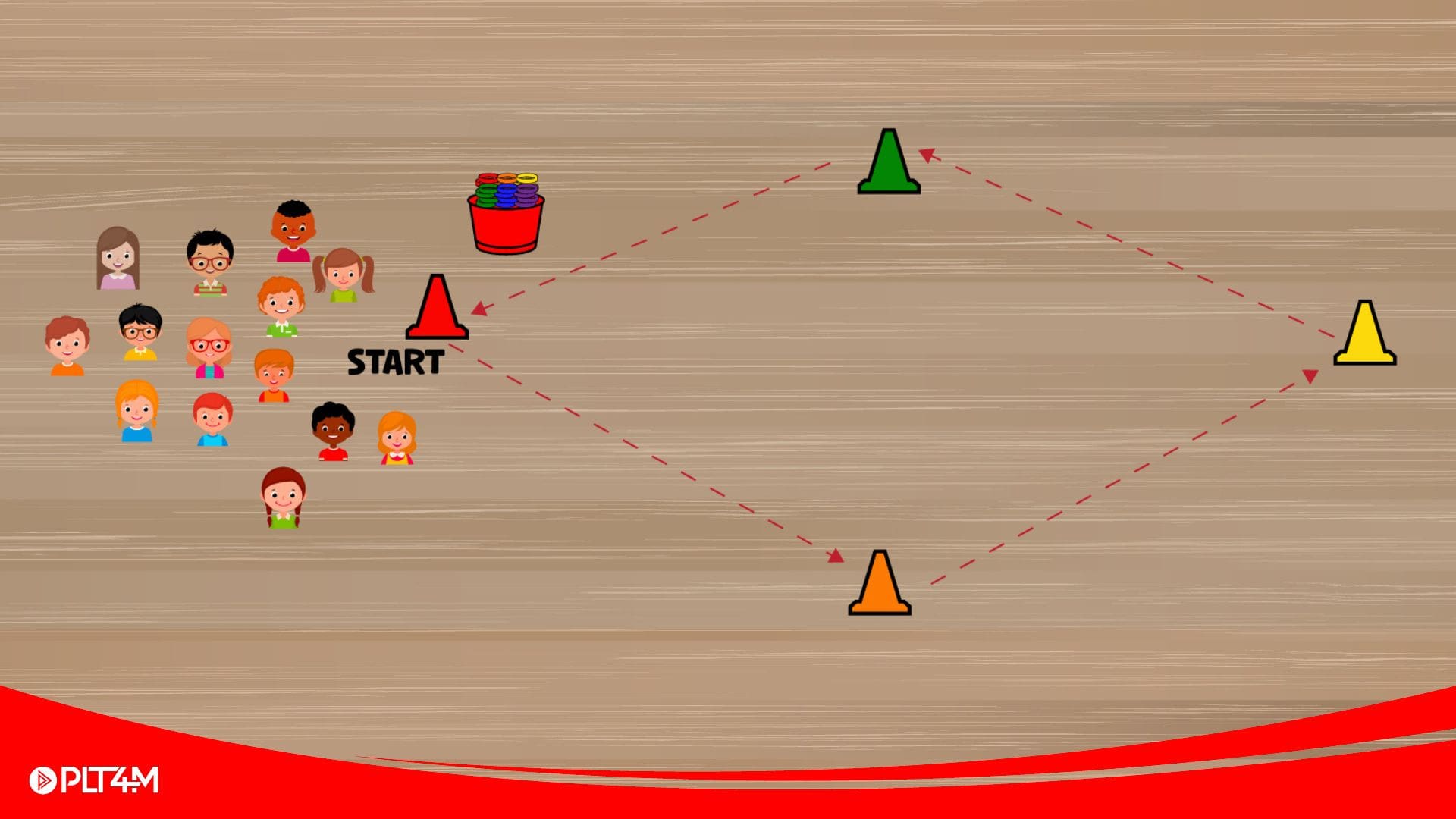Exercise and fitness should not be a one size fits all approach. Modified exercises allow every individual to succeed in fitness. In this blog, we will explore 5 exercise modification examples that are an excellent addition to any physical education class or workout.
What Happens When You Don’t Provide Exercise Modification Examples?
When students are not provided with exercise modification examples, their workouts and fitness journey suffer.
Without exercise modification examples, many students will struggle with good form. Let’s use the push-up as an example. If you tasked 50 randomly selected students to perform a standard push-up from the ground, chances are most of them would struggle. You would likely see many not doing a full range of motion push-up. Others might be able to but have elbows flared out or butts up in the air. (Stay tuned for push-up exercise modification examples later in this article).
Past worrying about just proper form, without modification, many students are susceptible to injury. Using the same push-up example from above, students who continue with improper form over time can start to suffer from shoulder pain or other upper body injuries. Any type of injury from working out will likely stop a student’s fitness journey in its tracks.

The Case For Modified Workouts & Exercises
Every student is on their own personal fitness journey. In any physical education class or workout setting, there will likely be a wide range of fitness levels. And as teachers and coaches, it is our job to help each individual reach their full potential.
It may seem a daunting task to provide and create dozens of modified workout options for each student. Luckily, it doesn’t have to be that complicated. A little modification in almost any workout routine can go a long way.
By even just providing a few different exercise modification examples in a class or workout, you can open up the door to so many more students. Simple ways to create modified workouts include:
Exercise Modifications
Scaling Up/Down Number of Reps
Scaling Up/Down Time Domain
Modifying Resistance/Weight Of Movement
Any of these options can give students avenues to workout and feel successful regardless of their current fitness level. As a result, more students are likely to feel empowered that they are getting a good workout, irrespective of what their peers are doing.
Free Fitness Lessons For P.E. Classes
Looking to branch out from the traditional games based P.E model? These 15 ready to go lessons can help!
5 Exercise Modification Examples
While there are endless ways to modify workouts, a great place to start is with some simple exercise modifications. With almost any movement, exercise variation can allow more students to find a great modification that promotes proper form and better body awareness.
For any of these exercise modification examples, consider starting every student out with the variation. For example, rather than saying, “If you can’t do a regular push-up, do this,” consider reframing it by saying, “A great variation to the push-up is an elevated push-up; let’s all try it.” Flipping your language puts students in place to think of what they CAN do rather than what they CAN’T do.
Let’s dive into the five modified exercises!
1) Air Squat – Squat To Target
The 4 points of performance of an air squat are:
1) Entire foot in contact with the ground
2) Knees tracking toes
3) Lumber curve maintained
4) Hips descending below parallel
The problem we often encounter in many students is the inability to achieve the proper depth. One of the 4 points of performance, it can be the most difficult for some to achieve without sacrificing the other 3. Therefore, we scale and teach depth over time rather than jeopardize foot placement, knee path, or maintenance of the lumbar curve.
2) Push Up – Elevated Push-Up
The push-up is one of the most popular bodyweight exercises for students. However, even with an understanding of the movement, some students will lack the pressing or midline strength required. In fact, at first, most students will likely struggle to complete even one perfect push-up from the floor.
In regards to the push-up, we here at PLT4M opt to scale the difficulty of the press through elevation. By taking the press off of the floor (via a box, bench, desk, or other objects), we decrease the force necessary to press to full lockout (changing the percentage of bodyweight the press moves and midline must support).
This progression allows for the student to perform any prescribed volume of push-ups in a given workout (thus developing their capacity) while not sacrificing form or the midline stabilization component (like knee push-ups). Once a student develops consistency at a given height, we move them down, increasing the difficulty. This consistent focus on appropriate movement mechanics, while progressing through an increasing level of difficulty, results in the eventual completion of perfect reps from the floor.
3) Pull Up – Different Pulling Variations
One of the trickiest components of running a successful training program is the appropriate scaling of bodyweight pulling movements.
Pulling is an essential part of any program as we must balance with all of our pushing work to optimize performance and avoid injury. Unfortunately, bodyweight pulling is a tough skill for many students. Instead of avoiding entirely, or allowing for half reps and technical failure, we should scale our prescribed workouts for each student.
Here we briefly introduce a few different ways to scale the simple “Pull Up”. From ring rows, to barbell inverted rows, to band-assisted pull-ups – your students can all find the right option for them.
4) Barbell Movements – Training Bars & PVC Pipes
While not a specific movement like the squat, push-up, or pull-up, it is essential to talk about the barbell. Many good workout programs will eventually introduce the barbell as a piece of equipment. However, for many students, this can be both intimidating and challenging.
Often barbells weigh 45 pounds and may not be a great starting point for students just starting out. If in the budget, a good alternative is to purchase training bars that can weigh anywhere from 10 to 45 pounds to provide more scaling options for any barbell movement.
In addition to lighter barbells, one of the most cost-effective alternatives to barbell-modified exercises would be incorporating a PVC pipe. A PVC pipe can replicate the shape of a barbell with almost no actual loading. As a result, many physical education programs tout the purchase of PVC pipes as one of the best investments.
And while the PVC pipe is a great addition to the PE classroom, it can also be a great way to introduce students to all the different objects they can use to replicate a barbell. For example, check out this fun video from Coach Max as he shows how a broomstick can turn into an effective training tool!
5) Running – Cardio
Running is one of the most popular forms of cardio, but it is not the only form of cardio. For example, sometimes you cannot physically run because of weather or access to a track or ample open space. Other times, students will express the frustration many of us feel about “not loving running.”
Cardio can come in so many different forms. From jumping on a bike or rowing machine to jumping jacks and burpees, getting creative with cardio is always an option. Also, providing various exercise modification examples for running can give students autonomy and choice to find the cardio they like best.
Check out Coach Bres break down all sorts of creative cardio options you can do without any equipment or access to running.
Key Takeaways On Exercise Modifications
Modified workouts don’t mean bad workouts! The goal of fitness education is to support every student in finding what a good workout means to them. Exercise modifications are meant to help students feel like they are capable, not lesser than their peers. It is worth repeating that exercise modifications are a great place to start for every student.
When introducing and incorporating modified exercises, be mindful of your language. Instead of saying an “easier option,” try saying, “an option that might work best for you.” For most students, even the modified activity introduced will be challenging and provide a good workout. Rather than diminishing their experience by calling it “easier,” you can help set the stage that every single student has the opportunity to get a little bit better. And that means no matter where they are starting from.
Lastly, while we showcased five different exercise modification examples, know that this just scratches the surface. Almost any movement, workout, or fitness routine has endless ways to scale and modify. Whether it is general fitness, like the examples highlighted, or other things like yoga, pilates, dance, or boxing, there are always ways to modify workouts for different groups of students.
Not sure where to start? PLT4M is here to help you plan out your curriculum and exercise program for all fitness levels and pe lesson plans. Schedule a consultation with one of our team members to see how PLT4M can help you achieve your educational fitness goals!
Ready to Learn More?
Schedule a free 10 minute consultation to see how the PLT4M system can help save you time, and empower student learning!










